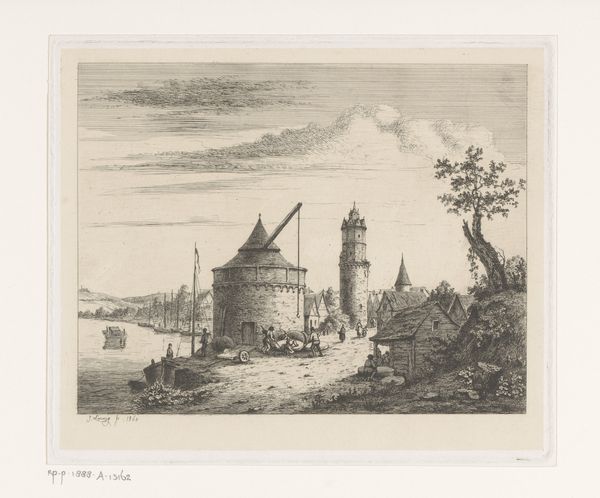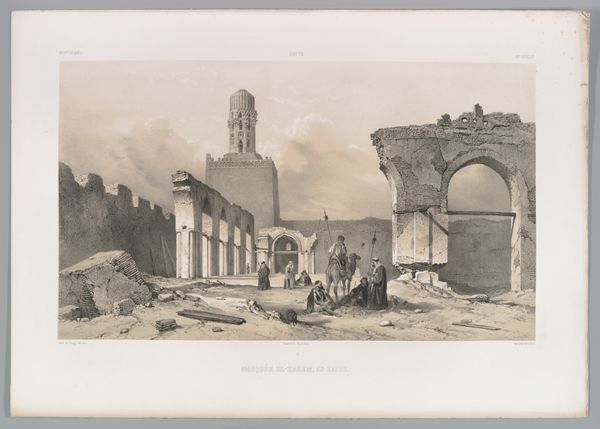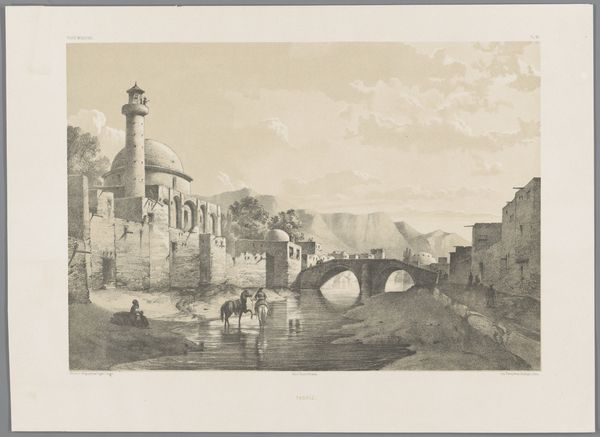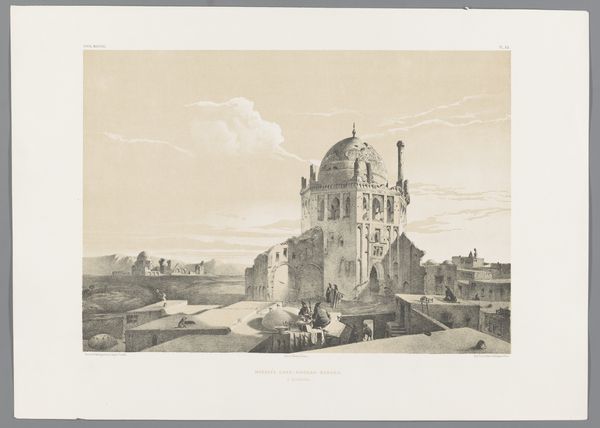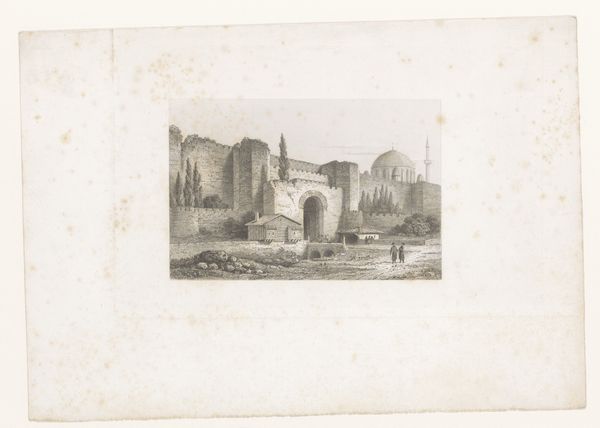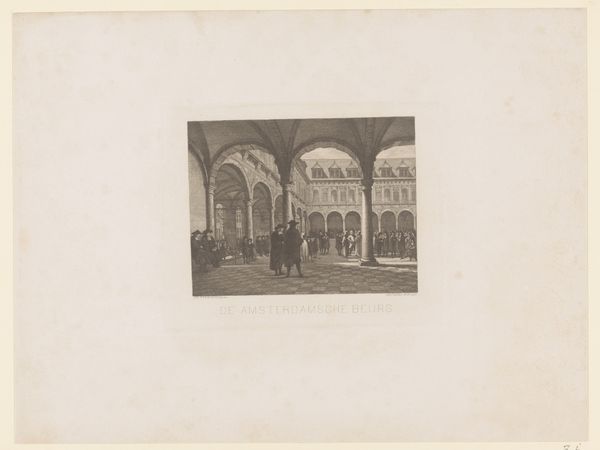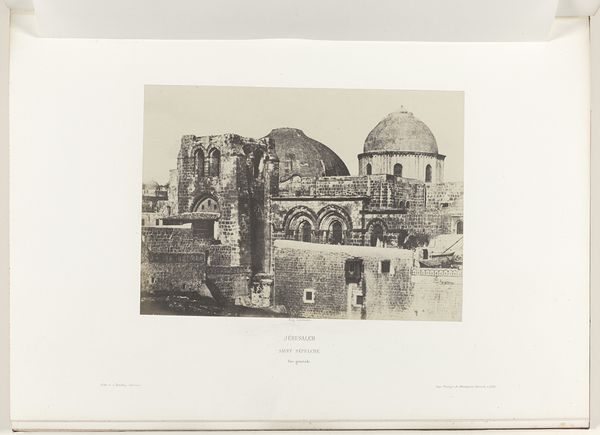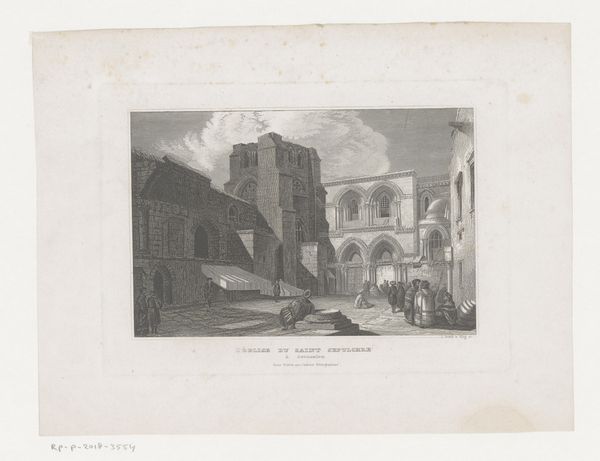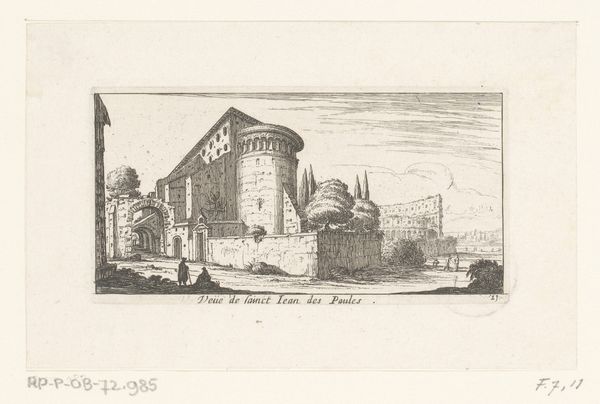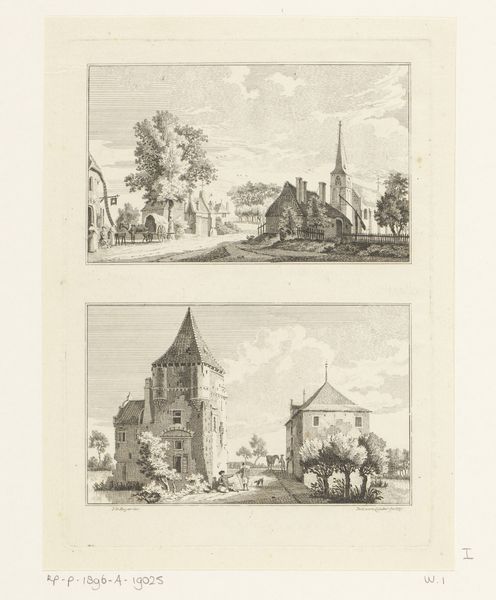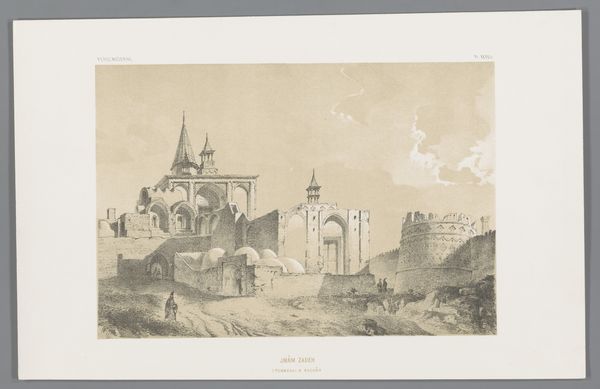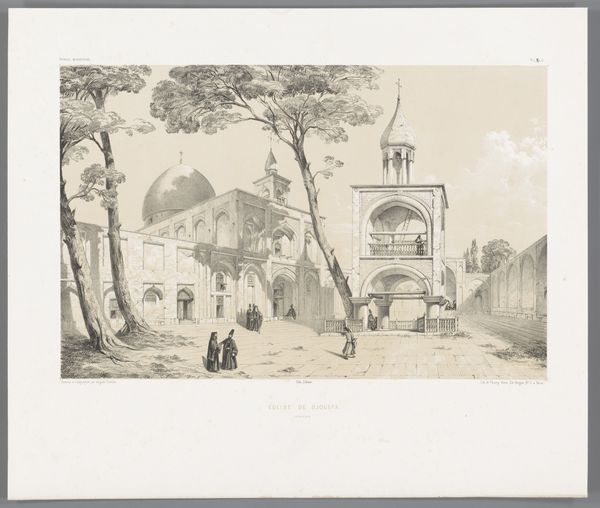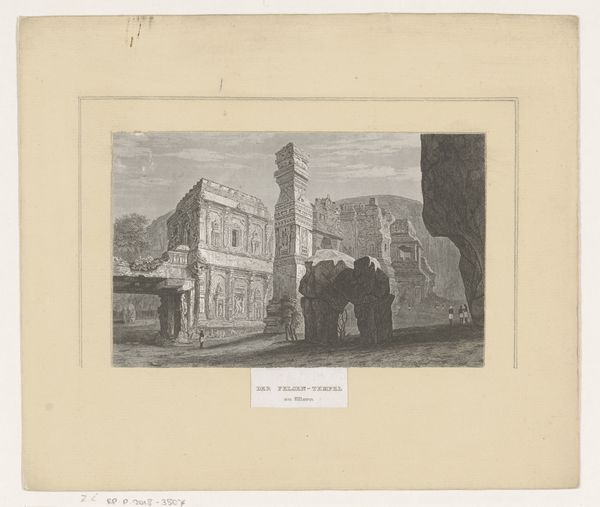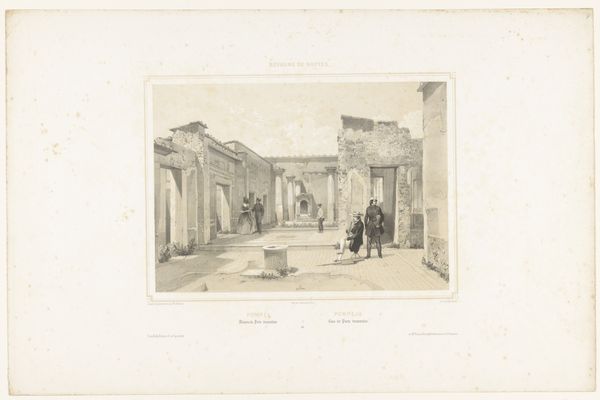
drawing, pen
#
drawing
#
landscape
#
orientalism
#
pen
#
islamic-art
#
watercolour illustration
#
watercolor
Dimensions: height 436 mm, width 497 mm
Copyright: Rijks Museum: Open Domain
Editor: So, here we have Eugène Flandin’s "Graftombe van Esther en Mordechai", dating from between 1843 and 1854. It's a drawing made with pen and watercolour and evokes a feeling of solitude, especially in the right panel. How do you interpret this work? Curator: I find it compelling to consider the colonial gaze at play in this work, the way Flandin, as a European artist, depicts this Eastern site. We should analyze the labor involved, not just Flandin's, but the hands that crafted the tombs themselves. Do you see how the meticulous detail in the tomb on the left contrasts with the landscape treatment on the right? Editor: Yes, the one on the left appears incredibly detailed. It almost feels like two different drawings, in a way. Why would Flandin include these two distinct views? Curator: Perhaps he wanted to showcase both the intricate craftsmanship and the wider social context. Consider how the materials used in the tombs themselves – stone, plaster, paint – were sourced, traded, and manipulated. What do they tell us about the economic and social structures of the time? How do we perceive 'Islamic Art' versus the artistic choices of Flandin's "Orientalism"? Editor: That's a point I hadn't considered – the distinction between the actual materials and the artist's representation of them. It prompts questions about authenticity and representation in colonial art. It really feels like a collection and documentation of resources, but in picture form. Curator: Precisely. By interrogating the labor and materials, we uncover layers of meaning often overlooked in traditional art historical analysis, offering a counter-narrative to Eurocentric interpretations. We begin to comprehend that what is lost or intentionally erased reveals imperial priorities more sharply than romanticized subject matter. Editor: Thanks. I appreciate how you reframed my initial understanding by highlighting the materials and production behind the artwork. Curator: My pleasure. Shifting focus to materiality often unveils power dynamics within artistic creation.
Comments
No comments
Be the first to comment and join the conversation on the ultimate creative platform.
